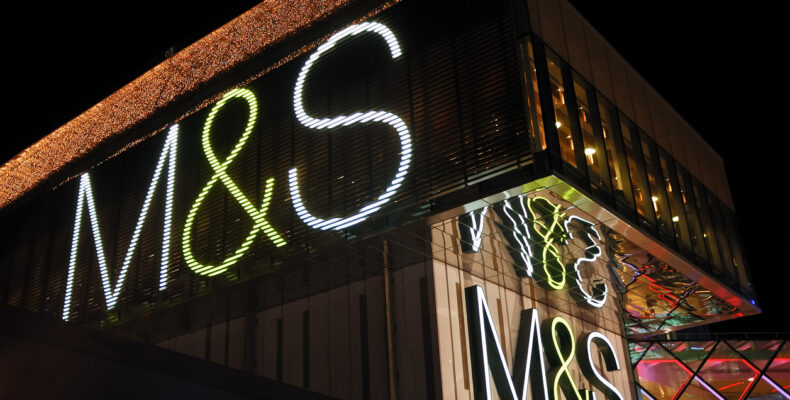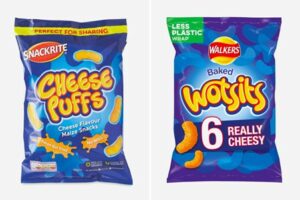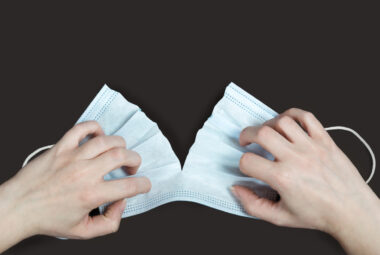
How do certain brands get away with lookalike products? The answer opens up a can-of-caterpillars…
Intellectual Property (IP) law is not something that easily attracts the UK public’s attention. However this changed significantly when the subject – which is considered by many to be a modern-day ‘National Treasure’; an essential part of celebrations the length and breadth of the country – was caught up in an IP ruckus, sparking a national debate.
In this article, we look at the recent passing off claim issued by Marks & Spencer Group plc (M&S) against Aldi Stores Limited (Aldi) based on its’ COLIN THE CATERPILLAR cake against the Aldi product launch of CUTHBERT THE CATERPILLAR, and the surrounding IP law which led to the outcome.
As readers are most likely aware, Aldi is notorious for producing products that resemble or give a nod to a brand.

The question is: how do businesses like Aldi get away with it?
The law is unclear
The law behind lookalike products is unclear as to what is considered acceptable. There are no specific provisions in IP laws which protect a business when a competitor launches a lookalike product; instead, a business must look to rely on the individual IP laws and work out which one, or which combination of laws will help them prevent a competitor launching a lookalike product. The first time a manufacturer took a retailer to the High Court over a lookalike product was in 1997. United Biscuits (UK) Ltd successfully sued Asda Stores Ltd for passing off over the similarity of its PENGUIN biscuits to Asda’s PUFFIN biscuits. Since then, very few cases have ended up in the courts.
In the 2019 case of Islestarr Holdings v Aldi Stores Ltd, Charlotte Tilbury successfully proved Aldi’s make up product had infringed Charlotte Tilbury’s copyright of the pattern used on two of its earlier products packaging, even though Aldi had carefully used an alternative brand name.
Arguing post-sale confusion
One argument in defence of Aldi is that consumers are aware that when they enter an Aldi store, they clearly know they are purchasing products that only resemble another company’s product. However, this does not consider the issue of post-sale confusion. Deputy Judge David Stone handed down a decision that covered this very topic in Freddy SpA v Hugz Clothing Limited, and provides complainants with something to consider.
The logic behind post-sale confusion is that a consumer, who is not confused at the time of purchase, buys the lookalike product wanting others to believe that the lookalike product is associated with, or is in fact, the original. In this sense, the customer continues to ‘sell’ the product as it is, confusing other potential consumers and third parties. In the event the second consumer believes the product is the ‘original’ and they have a negative experience, this in turn can affect the image and reputation of the original product.
So we can apply this argument to M&S versus Aldi. If a customer purchases a CUTHERBERT THE CATERPILLAR cake for the purpose of a party, but the guests at the party believe it is a M&S COLIN THE CATERPILLAR cake, eat it, and do not enjoy their experience, this can negatively impact M&S’ brand and image and could result in a loss of future sales. However, you still need to have IP in the product and/or the packaging in the first place to prevent a lookalike.
So what can businesses do?
The nature of the passing off between supermarket products predominantly resolves around the products packaging and whether there is a risk of confusion between the copycat product and the ‘original’ product because they look alike. Therefore, one option would be to registering the shape of the product as a trade mark. Understandably one might ask: why didn’t M&S register the shape of the COLIN THE CATERPILLAR cake to enjoy broader rights given that it is so distinctive, and it is so important to them? However it is notoriously difficult to register a shape mark. Examples of accepted shape trade marks include the COCA-COLA bottle and DURACELL battery.
While the examination process for shape marks is no different to that for other types of marks such as word marks and logos, the UKIPO has recognised that shape marks are perceived differently by the average consumer. This is because the consumer is not used to seeing the shape of the product function as a badge of commercial origin indicating the source of the product; to function as a trade mark, the shape must not be seen by the average consumer as just being the shape of the actual product itself.
Case law has demonstrated that for most shape marks to be considered registrable, evidence that the mark has acquired distinctiveness is required.
What measures have M&S taken to strengthen its IP?
While it does not appear that M&S has filed for any shape marks for their products, it has filed and secured protection for figurative marks for its products in their packaging.
The filing dates of the applications and registrations suggest that they have been filed because of the dispute with Aldi, and to broaden M&S’ protection for its products and packaging.
Unfortunately, as is often the case, M&S and Aldi settled their dispute outside the remits of the Courts and we are therefore left without the High Court’s opinion on the matter. Historically, it would appear Aldi is not afraid to get too close to a third party’s product, and then settle the matter on a business-to-business approach.
As expected, it is somewhat disappointing to many IP lawyers that the CATERPILLAR cake dispute did not proceed to the High Court since it was hoped some novel points concerning post-sale passing off and shape marks might have been discussed. Unfortunately, this means that the law is still murky on rules applied to lookalike products.
Nevertheless, the examples discussed in this article should illustrate that businesses ought to consider their IP portfolio in tandem with any important product lines to assess if the protection is sufficiently robust to prevent a competitor from launching a competitive lookalike product.
If you would like to discuss this article in more detail, please do not hesitate to contact your usual Barker Brettell attorney.


